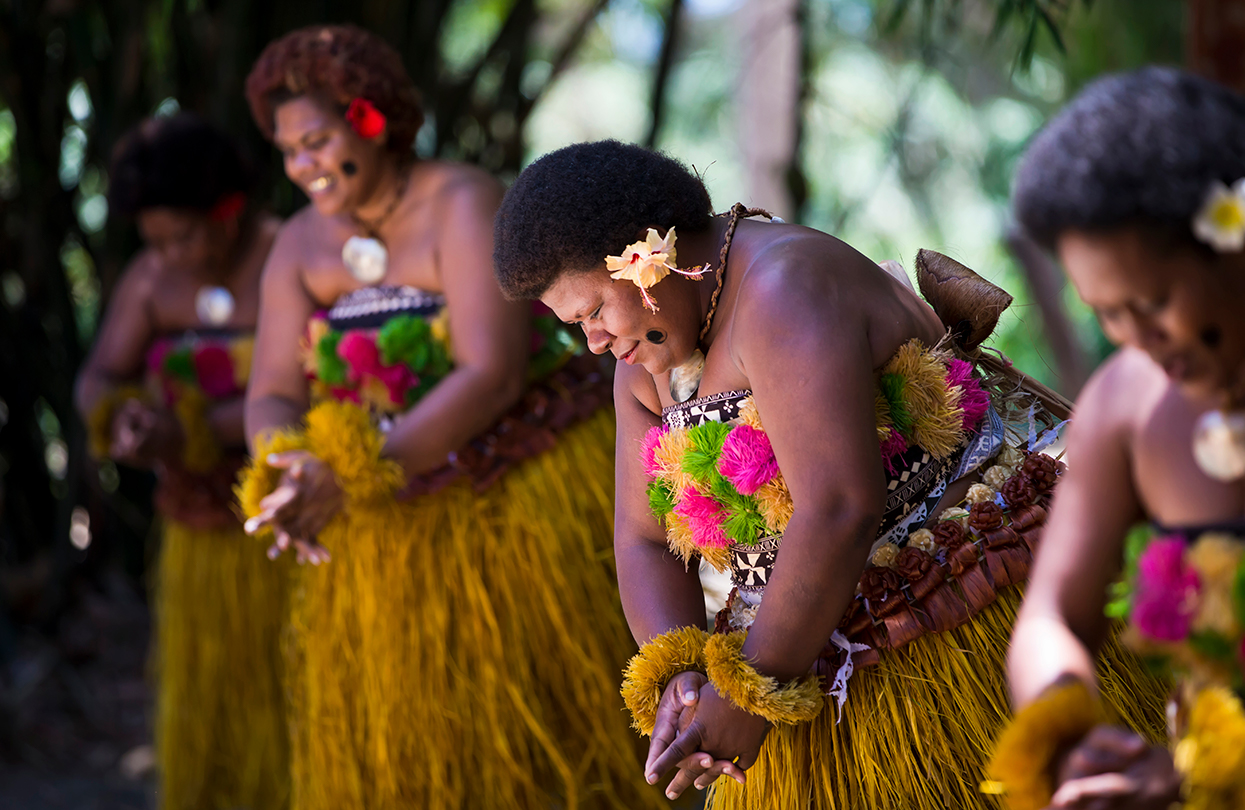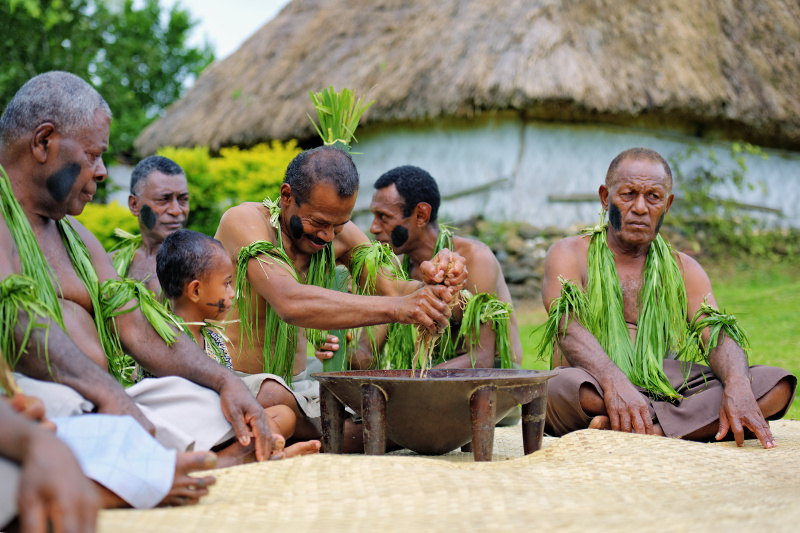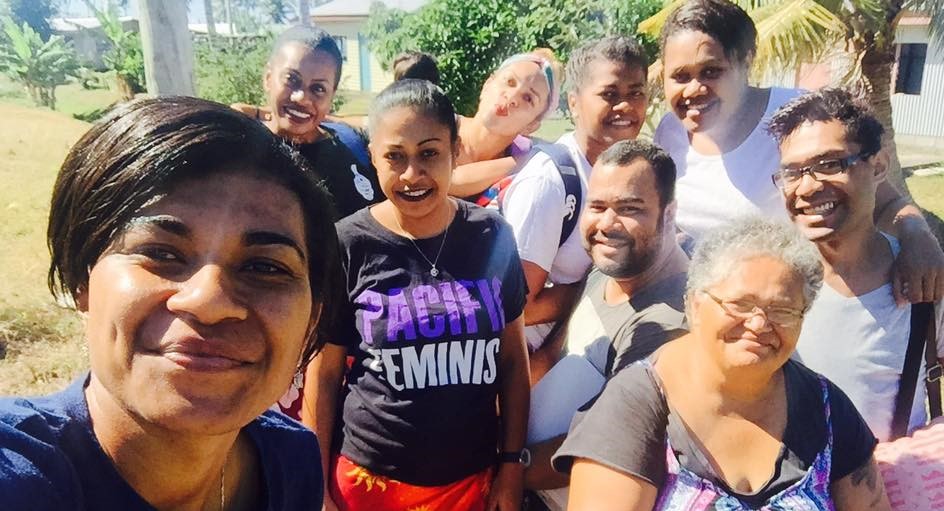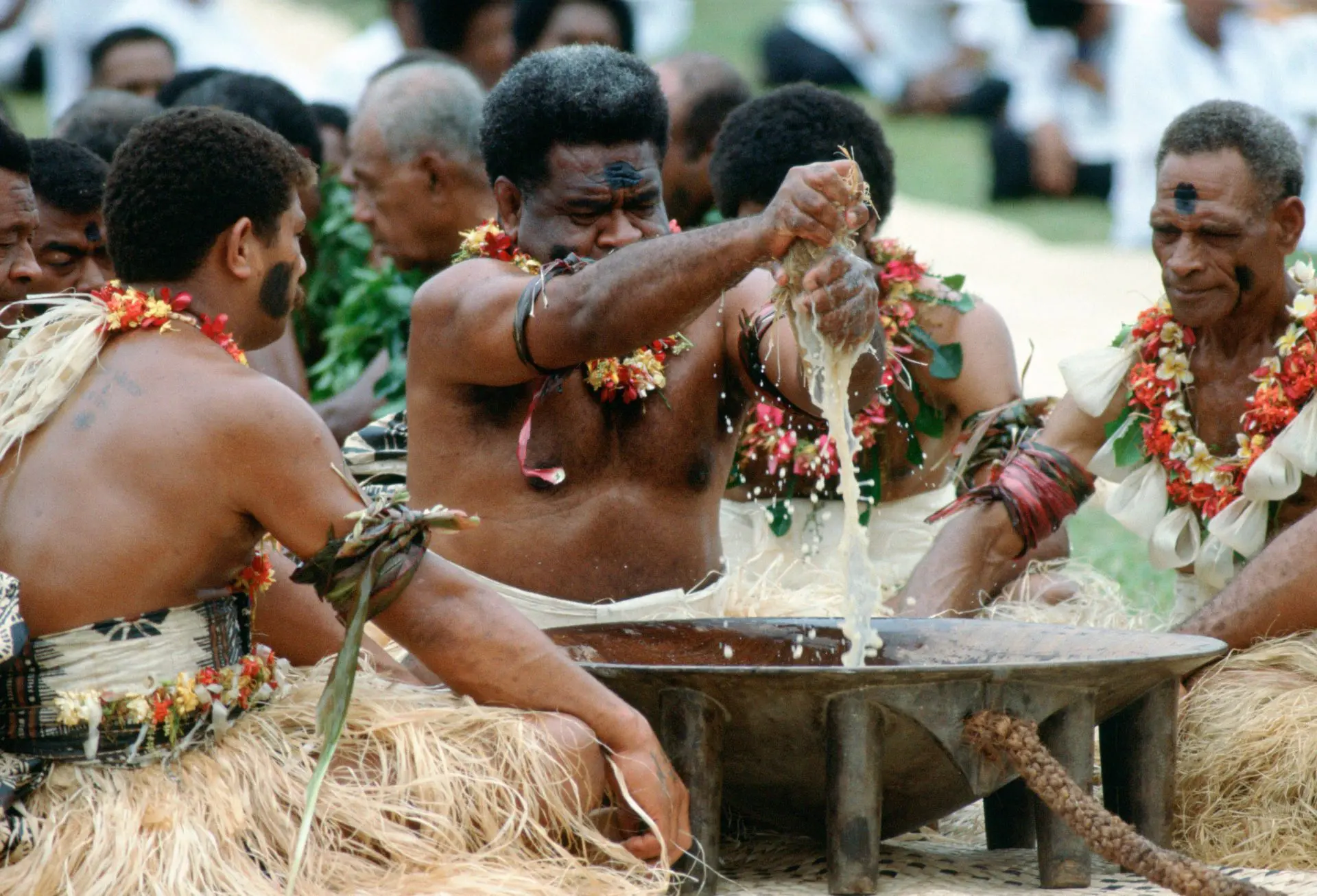NGO & Charity Management
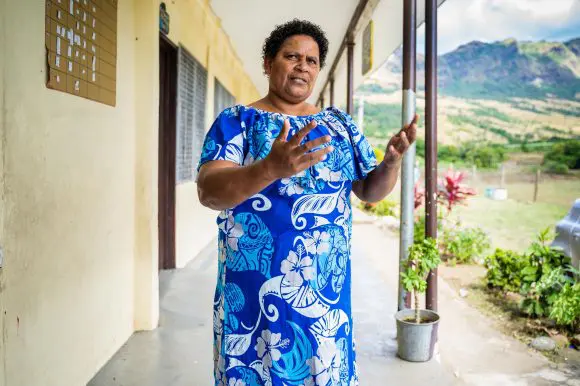
Module 1 – An Introduction to Non-Governmental Organisations
- The Global NGO Movement, Definitions, Acronyms and Abbreviations, The History of NGOs, How are NGOs Funded? International NGOs, Criticism of NGOs
Module 2 – An Introduction to NGOs in Fiji
- NGOs & Civil Society in Fiji, Currant Issues Facing Fiji, NGOs & the UN Sustainable Development Goals, NGOs & the FNDP
Module 3 – Managing an NGO
- Key Aspects of NGO Management, How to be A Systems Change Agent
Module 4 – Grass Root NGOs in Fiji
- Micro & Small NGOs Working in Fiji
Module 5 – Test Your Knowledge
Module 1: An Introduction to Non-Governmental Organisations
The NGO movement is a complex mishmash of alliances and rivalries; charities and businesses; radicals and conservatives. Funding comes in from all quarters, and it goes back out again in every conceivable direction. The World Bank definition of NGOs is broad enough to include PSI as one of the world’s oldest. It also includes most churches. The WTO definition is broader still; broad enough to include industry lobby groups such as the Association of Swiss Bankers and the International Chamber of Commerce[4]. The closer one looks, the more inclined one is to wonder whether the expression “non-governmental organisation” has any significant meaning at all.
The term NGO came into currency at the end of the Second World War, as the United Nations sought to differentiate between inter-governmental specialized agencies and private organisations. But the movement’s origins are much older. The first international NGO was probably the Anti-Slavery Society, formed in 1839. The anti-slavery movement, which reached its height at the end of the 18th century, was the catalyst for many organisations that followed. Other early NGOs grew out of wars, including the Red Cross in the1850s after the Franco–Italian war; Save the Children after World War I; and Oxfam and CARE after World War II.
Key Information:
NGOs, or non-governmental organizations, play a major role in international development, aid, and philanthropy.
NGOs are non-profit by definition, but may run budgets of millions or up to billions of dollars each year.
NGOs rely on a variety of funding sources from private donations and membership dues to government contribution.
There are several distinct types of NGO, each with its own mandate.
Civil society refers to the space for collective action around shared interests, purposes and values, generally distinct from government and commercial for-profit actors. Civil society includes charities, development NGOs, community groups, women’s organizations, faith-based organizations, professional associations, trade unions, social movements, coalitions and advocacy groups.
Many people use the words NGO, non-profit, charity and social enterprise almost interchangeably and there are certainly many overlapping characteristics.
Common usage varies between countries – for example NGO is commonly used for domestic organizations in Australia that would be referred to as non-profit organizations in the United States.
While the term “NGO” has various interpretations, it is generally accepted to include private organizations that operate without government control and that are non-profit and non-criminal. Other definitions further clarify NGOs as associations that are non-religious and non-military.
All NGO’s must be non-for-profit organisations, but not all NFP will describe themselves as an NGO.
Many NGO’s are also charities. Charities are a distinct entity and have strict guidelines about what they are and are not able to do and certain tax benefits depending on the country of registration.
Social enterprises also offer social benefit and are becoming an increasing dominant player in solving local and global issues. Different to NGOs, they use business activities and commercial tactics to earn funds, which they then primarily (some wholly) reinvest into their social mission.
Tamara Hasan Abed, senior director of enterprises at Brac (one of the largest global NGO’s) states that as countries move towards middle-income status, and with government aid money drying out, charities will have to convert to social enterprises in order to address challenges in human development “Charities will do well to change mindset and become more entrepreneurial.”
Why Are There So Many Overlapping Names & Structures?
Different organisations have different requirements and goals, which can be better supported by certain types of legal frameworks and requirements. Being a registered charity also takes time, and some groups do not see the need, especially when first starting up.
Many organisations can fit into a range of categories and choose to focus on their work, rather than their definition. Ultimately, the overriding aim of all NGO’s is the betterment of the people and society.
A non-governmental organization (NGO) is a non-for-profit, voluntary citizens’ group, which is organized on a local, national or international level to address issues in support of the public good (United Nations)
A charity is an organisation with specific purposes defined in law to be charitable – and is exclusively for public benefit (NCVO). Many NGOs are also charities.
Businesses with primarily social objectives whose surpluses are principally reinvested for that purpose in the business or in the community, rather than being driven by the need to maximise profit for shareholders and owners (Gov.uk)
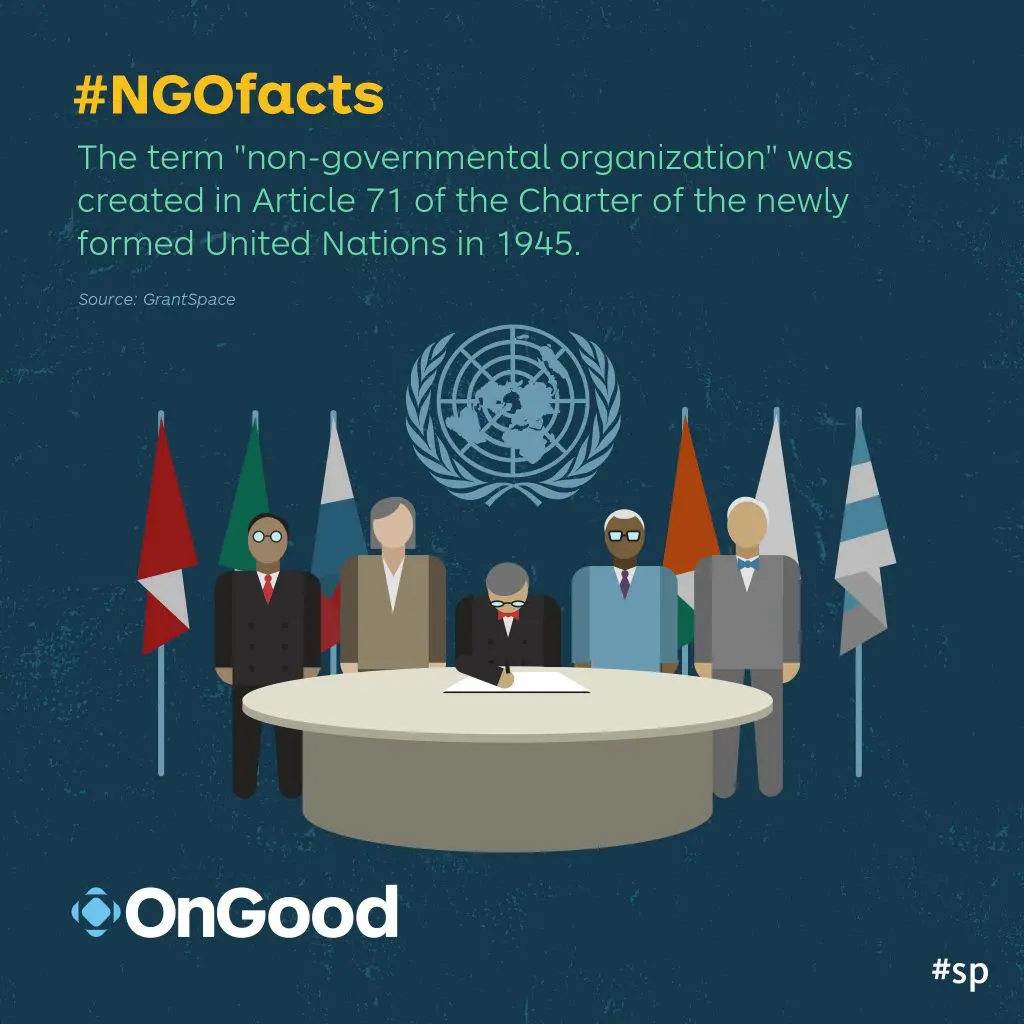
- There are an estimated 10 million (non-governmental organizations) NGOs worldwide. Source: The Global Journal
- Nearly one in three (31.5%) people worldwide donated to charity in 2015 and one in four (24%) volunteered. Source: Charities Aid Foundation
- Three out of four employees in the NGO sector are female, but the majority of leadership positions at NGOs are still predominately held by men. Source: HR Council
- If NGOs were a country, they would have the 5th largest economy in the world. Source: John Hopkins University
- There are more than 1.5 million NGOs in the United States that combined contribute 5.3% to the Gross Domestic Product (GDP) Source: National Center for Charitable Statistics
- With over 3.3 million non-governmental organisations, India has approximately one NGO for every 400 people. Source: Infochange
- Eighty percent of global citizens agree that nongovernmental organizations (NGOs) make it easy to be involved in positive social change. Source: Walden University
NNGO
national non-governmental organization
LNGO
local non-governmental organization
INGO
International non-governmental organization
QUANGO
Quasi non-governmental organization
BOND
British Overseas NGOs for Development
DAC
OECD Development Assistance Committee
PPA
Partnership Programme Agreement
DFID
Department for International Development (United Kingdom)
FDI
foreign direct investment
IMF
International Monetary Fund
MDG
Millennium Development Goal
ODA
Overseas Development Assistance
OECD
Organisation for Economic Co-operation and Development
PRSP
Poverty Reduction Strategy Paper
PRS
Poverty Reduction Strategies
SWAP
sector-wide approach
UN
United Nations
UNRISD
United Nations Research Institute for Social Development
USAID
US Agency for International Development
International non-governmental organizations have a history dating back to at least 1839. International NGOs have been important in the anti-slavery movement and the movement for women’s suffrage, and reached a peak at the time of the World Disarmament Conference.
The term “non-governmental organization” was created in Article 71 of the Charter of the newly formed United Nations in 1945. An NGO can be any kind of organization provided that it is independent from government influence and is not-for-profit. Source: GrantSpace
NGOs exist for a variety of purposes. Examples include improving the state of the natural environment, advocating for human rights or improving the welfare of the disadvantaged. However, there are a huge number of organizations and their goals cover a broad range of political and philosophical positions.
Two broad groups of NGOs are identified by the World Bank as:
- Operational NGOs,The main purpose of operational NGO is to design and implement the development-related projects. The scope of the Operational NGOs can be national, international or even community-based.
- Advocacy NGOs, The main purpose of an Advocacy NGO is to promote a specific cause. It makes efforts to raise awareness and knowledge by doing various activities like lobbying, press work and activist events.
Certain NGOs may fall under both categories simultaneously.

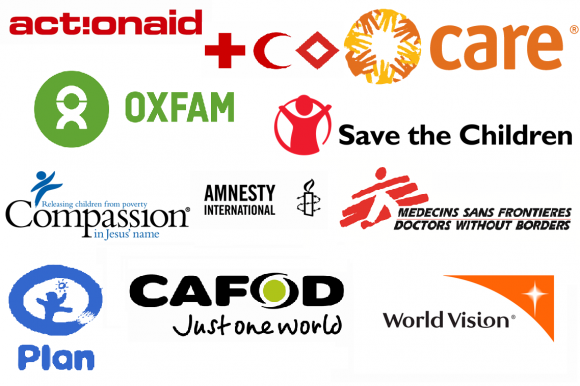
Some of the common types in this category are:
- Charitable Orientation: This is where the activities of the NGO are meant to meet the needs of the poor. It can be to provide basic requirements such as food, clothing and other material needs. These NGOs are also known to actively participate during disasters.
- Service Orientation: As the name suggests, these NGOs provide vital services such as medical, housing, education, family planning and other assistance which people may need but do not have access to.
- Participatory Orientation: In this kind of NGO, the local people who are being targeted are allowed to actively participate in implementing the project. For instance, if they are executing a house building task, it is the people on the ground who do the work.
- Empowering Orientation: These kinds of NGOs are dedicated to empowering communities to be aware of the social, political and economic issues which are affecting them, and how they can rise from oppression.
This method of categorisation is used to place NGOs on where they operate, and the platform they use to relate.
- International NGOs: These are NGOs which have their operation extending to different parts of the world. They work with local NGOs and governments, and some agencies, such as the United Nations (UN). Examples of international NGOs include the OXFAM, and Save The Children.
- National NGOs: These have their operations restricted to their country, and they are mostly professionals such as the YMCA, Red Cross and other organisations. They may liaise with other branches, but their operations are always limited to the country where they are based.
- Community-Based Organisations (CBOs): These are small scale organisations which operate within the community. Most of them deal with issues affecting a particular demographic. They are mostly formed to address specific needs. For instance, in a society where the literacy level is low, a CBO on empowering people to go to school will emerge to address the need.
 City Wide Organisations: Examples of city-wide organisations include Lions Club, and The Rotary, among others. Almost every city has this type of NGO, and they engage in different activities every year. Whether you are a volunteer or are looking for work with NGOs, it helps to know how they operate so that you can find how best you will fit in.
City Wide Organisations: Examples of city-wide organisations include Lions Club, and The Rotary, among others. Almost every city has this type of NGO, and they engage in different activities every year. Whether you are a volunteer or are looking for work with NGOs, it helps to know how they operate so that you can find how best you will fit in.
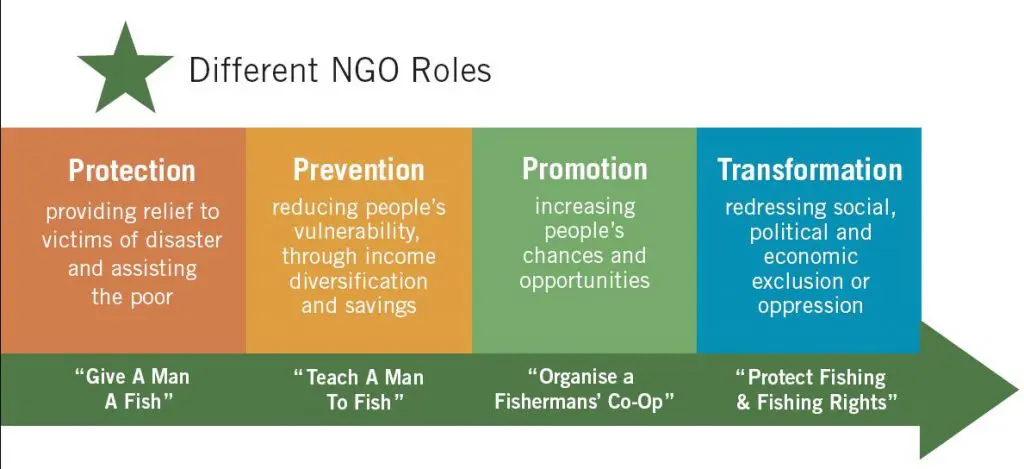
Some NGOs (especially those receiving funding from government) may have budgets in the millions or billions of dollars. At the same time, hundreds of thousands more community groups rely on almost zero budget and the sole support of volunteers.
As non-profits, NGOs rely on a variety of sources for funding, including:
Government funding
Membership Dues
Donations From Members of the Public
Corporate Donations
The Sale of Goods and Services
Grants
Despite their independence from government, some NGOs rely significantly on government funding. In fact, this can form the majority of the budget for the largest NGOs. This can naturally be a compromising issue as they try to maintain independence from politics, whilst keeping the needs of their biggest donor happy.
Here are 6 of the largest NGO’s in the world ranked by The Global Journal
“Critics of NGOs can be found across the political spectrum, ranging from rightists who object to NGOs in principle to leftists who criticize NGOs for their failures to advance a progressive agenda or for deferring to government preferences”
Critics of NGOs cite issues of accountability, their effectiveness, issues of autonomy, commercialization, political interpretations of their rising influence. Cases of abuse by workers or corrupt officials have been particularly damaging and weaken people’s confidence in charities.
Naturally there are good and bad in all sectors and charities are no different. It’s important for NGOs to build confidence that their aid is spent in the most responsible way.
Drawing on perspectives gathered from over 150 interviews shot over 4 years in 20 countries, Poverty, Inc. explores the hidden side of doing good. From disaster relief to TOMs Shoes, from adoptions to agricultural subsidies, Poverty, Inc. follows the butterfly effect of our most well-intentioned efforts and pulls back the curtain on the poverty industrial complex – the multi-billion dollar market of NGOs, multilateral agencies, and for-profit aid contractors. Are we catalyzing development or are we propagating a system in which the poor stay poor while the rich get hipper?
Here is a trailer, if you are able to watch the full documentary on Netflix or Amazon it offers a thought provoking stance on large NGOs
In a response ‘What’s wrong with Poverty Inc’ here is an interesting article debating the film
FSG studied the 50 largest U.S.-based International NGOs and others to unlock insights for both INGO leaders and funders regarding greater effectiveness and impact in the future. Here we provide an overview of our learnings in four sections
Progress toward achieving the Millennium Development Goals is mixed, and both INGOs and donors admit that today’s INGO model is not sufficient to take on the challenges of the next 20 years. This report explores whether INGOs can leverage their distinct assets to proactively create greater impact to benefit the people they serve.
They concluded ” The INGO of the future can build on its track record of implementation and achieve more sustainable and scaled impact by influencing systems change, engaging corporations as shared value partners, and leading coalitions between sectors. Adoption requires focus on the operational elements that enable INGOs to move in this direction”
Module 2: An Introduction to NGO's in Fiji
Fiji has a vibrant civil society mainly made up of ethnic and human rights groups, women’s affairs groups, and environmental non-governmental organisations (NGOs). Many of the international NGOs, which are a part of the Pacific Island Association of Non-Governmental Organisation (PIANGO), act as a platform for other NGOs in the region. Some of the international NGOs which operate in Fiji originate from other countries.
Domestic NGOs in Fiji have been established to provide aid for a range of issues in the country, from promoting women’s rights to protecting the environment. For instance, the Fiji Women’s Crisis Centre works to protect the rights of women in the country, YC4MH, Mental Health Alliance and Lifeline Fiji work to support mental health landscape, Greenpeace, WWF and Nature Fiji support the protection of Fiji’s natural environment, Other charities include: Homes of Hope, which runs orphanages and provides support to families, ChildBenefit which provides support to disadvantaged children and Think Pacific Foundation, which supports sustainable development projects in rural communities.

Pacific Regional Non-Governmental Organisations (PRNGOs) meet regularly to discuss issues of common concern.
- Pacific Disability Forum (PDF)
- Fiji Women’s Crisis Centre (FWCC)
- Foundations of the People of the South Pacific (FSPI)
- Greenpeace
- Pacific Foundation for the Advancement of Women (PACFAW)
- Pacific Islands Association of Non-Governmental Organisations (PIANGO)
- Pacific Islands News Association (PINA)
- Pacific Conference of Churches (PCC)
- World Wide Fund (WWF)
- Pacific Network on Globalisation (PANG)
- Pacific Youth Council
While extreme poverty is low in Fiji (only 4.5 percent of Fiji’s population live below the food poverty line of US$1.40 per day), 35.2 percent of the population live below the basic needs poverty line of US$3.10 per day), roughly corresponding to the bottom 40 percent. In urban areas, the rise of slum settlements is a continuing concern.
Many NGOs work to provide a key gap in services for mental health, domestic abuse and child welfare as examples. There is a rising health crisis, with Fijian having one of the worst rates of NCDs in the world, which calls for advocacy and knowledge of healthy lifestyles.
Overfishing and environmental protection are of key concern. Fiji is at the forefront of climate change, with an increase in flooding, draughts and cyclones, which have caused devastation in recent years.
Cyclone Winston, a category 5 cyclone was the biggest ever to hit Fiji, and has left emotional scars on large sectors of the community. It’s estimated 350,000 people – almost half Fiji’s population – were affected by the cyclone in some way. One of the hardest hit villages was Nukubalavu on Fiji’s Vanua Levu island, where 300kmh winds and huge tidal surges destroyed or damaged 59 of the village’s 62 houses. Fiji Red Cross is providing psychological first aid in the village and has noticed an improvement in the emotional wellbeing of the villagers.
Fiji is one of the smallest contributors to global carbon emissions, yet faces some of the most devastating consequences of extreme weather patterns.
According to Fiji’s National Climate Change Policy, global sea level changes will more than double by the end of the century. The rapid rise in sea levels and the resulting coastal floods have made portions of the island nation uninhabitable, whilst cyclones and draughts have both increased in recent years. Fiji’s future depends on countering the impact of climate change.
Lagi Toribau is an independent environmental consultant with a focus on oceans conservation and management based in Suva, Fiji. Previously, he was Program Director for Greenpeace. Lagi argues that the Pacific Island countries must change the narrative about being small island states. Rather, they are large ocean states who possess great untapped wealth and could one day be an oceanic superpower. His talk is distilled from 14 years experience overseeing national, regional and international projects targeting legal and illegal overfishing, and documenting threats to the Pacific Ocean on Greenpeace ships including the Rainbow Warrior.
Fiji’s suicide rate is higher than the global average and statistics from the first 8 months of 2019 indicate that the issue is worsening. In Fiji suicide is considered a major issue and is thought to be the biggest cause of death for Fijian Youth (YC4MH). Fiji Lifeline, a national crisis intervention helpline released suicide statistics: In the last 5 years they reported 1199 suicide and attempted suicide cases, which averages out to a Fijian attempting suicide every 36 hours.
Non-communicable or chronic diseases are the main cause of death and disability globally, and rates are increasing, particularly in lower-income countries.
In the Pacific Islands, recent decades have seen NCDs take the lead as causes of death, and are placing substantial strains on health care services and economic developments.
The non-communicable disease problem in Fiji and the region has been termed a crisis, with around 80% of deaths caused by an NCD and those numbers are growing.
During events such as a cyclone, a network of organisations work together under the National Disaster Management Office (NDMO), pooling resources and co-ordinating support. As an example, following Cyclone Winston, Think Pacific community raised over F$100,000, which we directed to food, water, clothing and basic items for hundreds of rural villages. We are forever grateful for the kind support of all of our donors as well as the British Army and Rotary International.
Sadly in April 2020, a further cyclone (Cyclone Harold) struck Fiji and Think Pacific is once again working with NDMO and has a fundraising campaign to aid the re-building of facilities on the impacted islands.
As recognized by the 2030 Agenda, NGOs play critical roles in SDG implementation: they raise awareness and mobilize; build capacity; design and implement projects; monitor and review policies; collect data; provide technical expertise; and both support and hold governments accountable to their commitments. .
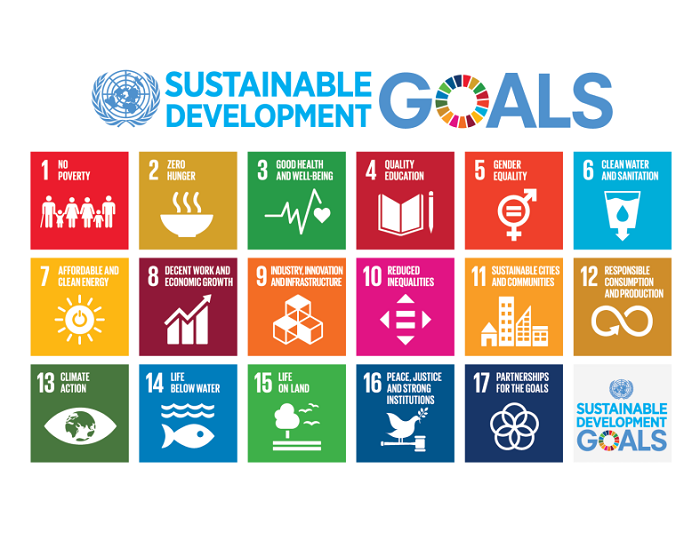
” We acknowledge the tireless efforts of the many hardworking Non-Government Organisations (NGOs) in Fiji. Their efforts to support the people of Fiji have created real and positive impact in the path towards better health for all Fijians’ Fijian Ministry of Health
Local and international NGOs support a wide range of FNDP goals, including:
Module 3: Managing an NGO
BRAC is the largest NGO in the world.
Founder, Sir Fazle Hasan Abed from BRAC in discussion on “Leading Development in Bangladesh” at the Yale School of Management.
“A goal without a plan is just a wish” – Antoine de Saint-Exupery (French writer, 1900 – 1944)
Strategic planning is vital for NGO management as it is for all organisations. it is an organizational management activity that is used to set priorities, focus energy and resources, strengthen operations, ensure that employees and other stakeholders are working toward common goals, establish agreement around intended outcomes/results, and assess and adjust the organization’s direction in response to a changing environment.
The strategic plan essentially focuses on the future and suggests measures that an organization must take to achieve its goals.
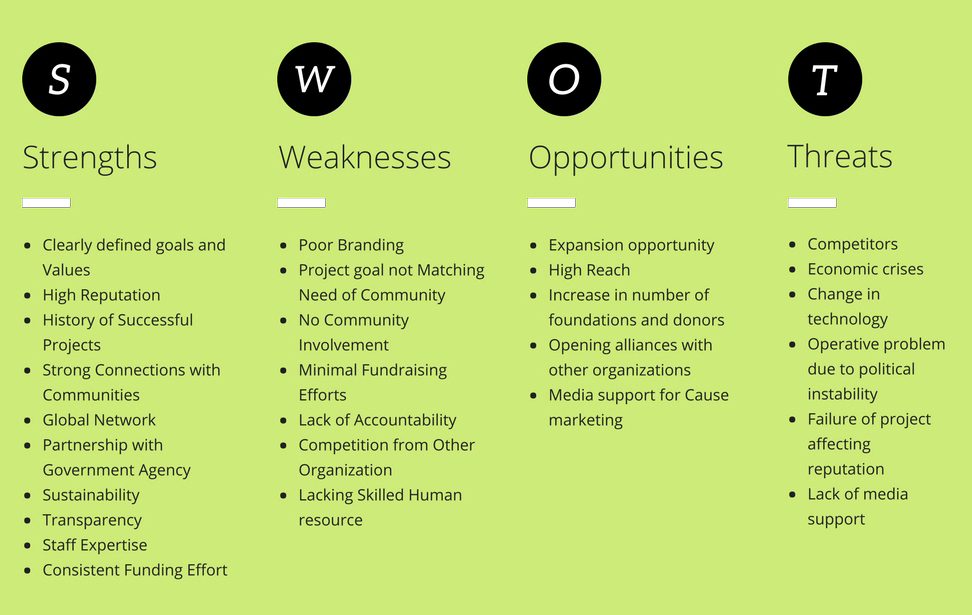
Ideally, a good strategy should be accompanied by effective planning tools. The most commonly used tools are
- Visioning
- Metrics or charts
- SWOT analysis
- Pestle analysis
- Affinity diagrams
- Portfolio analysis and Interrelationship digraphs
- A perfect combination of all the above tools finely integrates into the strategic planning model of an organization
Examples of Vision:
Oxfam – Our vision is a just world without poverty.
Save the children International- A world in which every child attains the right to survival, protection, development and participation
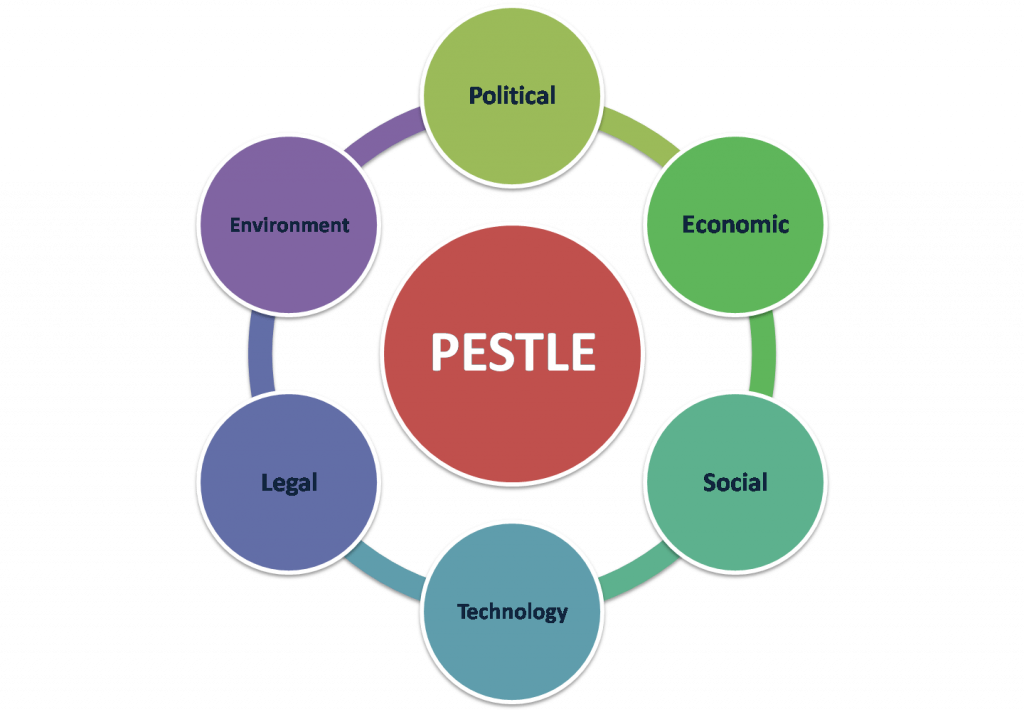
Fundraising is the lifeblood of Charities and NGOs.
The most common problem for charities and NGO’s in every country in the world is suitable access to funding to support their work. Most organisations draw financial support from wherever they can reach. This is likely to include donations from individuals, community groups, businesses and grants. Often there simply isn’t enough donations to go around with the huge majority of NGOs failing before they have fulfilled their vision because of financial collapse.
The following video provides a great introduction to fundraising for charities
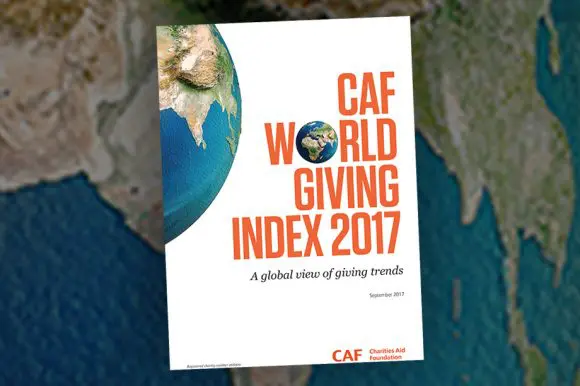
An NGOs ability to get funding is often related to submitting articulate, succinct proposals that have carefully followed all of the guidelines required by the donor — a process also known as grant writing. Retaining funding is likewise dependent on carrying out the activities outlined in the proposal, and in describing them to the donor in timely, well-written reports.
Good proposal and report writing is an art form. It requires an economy of word and clarity of meaning that experienced writers are accustomed to producing. Following proposal guidelines is not unlike following writer’s guidelines, although proposal guidelines can be far more exacting.
Writing proposals and reports for NGOs often requires technical knowledge about the type of project activities the NGO performs, including specialized terms and development strategies. Since many proposals are written as a team, a lack of specialized knowledge may not be a problem; however, this is an important point to clarify as you market your skills.
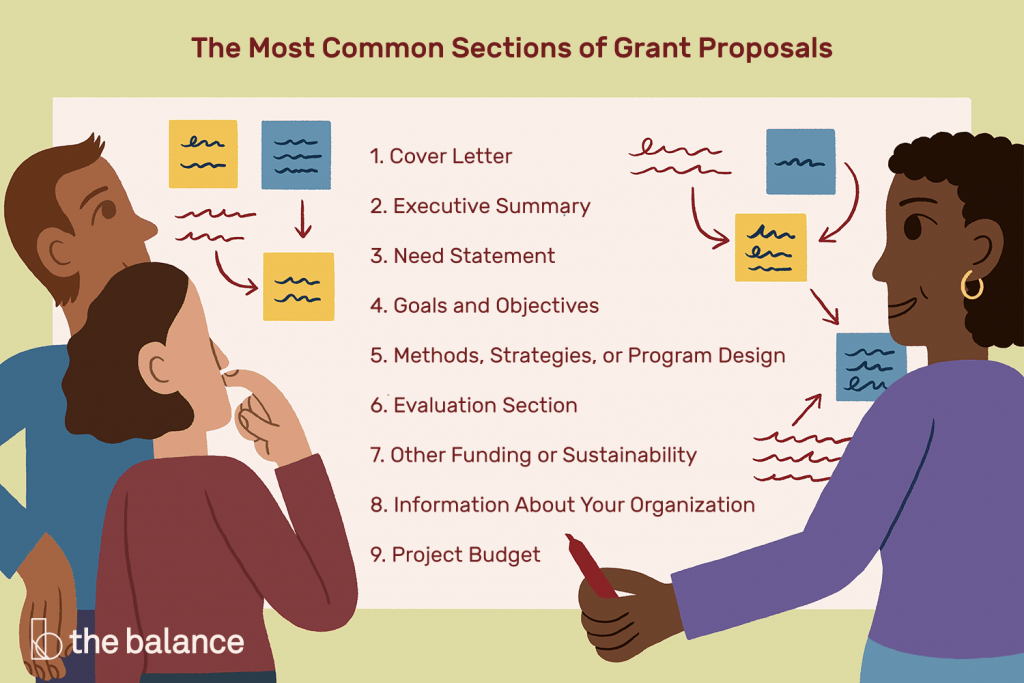
Research and Policy creation are key roles within any NGO. Here is a checklist of policies and other management systems necessary for NGOs to run effective organizations and mobilize resources for development work.
- Annual Reviews
- Impact Assessments
- Organizational Charts
- Affirmative Action Statement
- Child Protection
- Equal Opportunities
- Responsible Volunteering
- Leadership Succession
- Human Resource Management
- Communications Policy
- Procurement Policy
Whether you call it voice, influencing or advocacy, campaigning is an essential part of charities’ work. Campaigning is an effective tool to further their organisation’s charitable objectives and make an impact. Organisations such as Greenpeace and Amnesty protect environmental and human rights through managing effective campaigns.
- Build a Coordinated Multi-Channel Campaign.
- Clear Sense of Purpose and ‘Why’
- Craft Short, Clear Calls to Action.
- Set Clear, Realistic Goals.
- Make It Easy to Act.
- Tell Your Story
- Be Visual
- Be Different
- Engage Support
NGO organisations exists to make a difference, whether that’s enriching people’s lives, helping a particular cause or creating a better world.
The difference made is called the impact and it’s vital the organisations achieve real results.
How to measure impact?
- clarify the stages of your self-evaluation process
- understand the difference between outputs, outcomes and impact
- set output and outcome indicators
- learn how to collect and use data effectively
- present your impact to different audiences.
Module 4: Grass Roots NGO's in Fiji
Here are some of the organisations working on the ground in Fiji. They range from environmental protection and culture preservation to women’s rights and suicide prevention. Unlike the multi million (or billion) dollar NGO’s we explored at the start of the page, these are organisations with micro budgets, run by dedicated volunteers and trying to make change locally.
These are examples of the organisations you will be able to support.
Youth Champs for Mental Health (YC4MH) is a volunteer youth-based organisation which designs and delivers awareness raising, education and advocacy campaigns to improve the conditions facing survivors of mental illness, and raise awareness on youth suicide.
Some of the major barriers to growth highlighted by YC4MH include expertise in research, finance management and program development, as well as funding and retention of volunteers. These barriers create key areas in which you can really help during your action projects, be it in website development or securing funding.
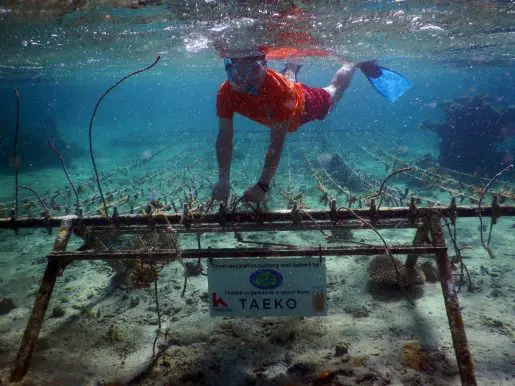
NatureFiji-MareqetiViti is Fiji’s only domestic NGO working solely for the conservation and sustainable management of Fiji’s unique natural heritage. NatureFiji-MareqetiViti-MareqetiViti’s mission is to enhance biodiversity and habitat conservation, endangered species protection and sustainable use of natural resources of the Fiji Islands through the promotion of collaborative conservation action, awareness raising, education, research and biodiversity information exchange.
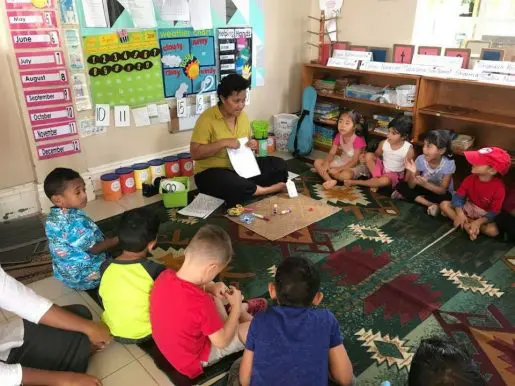
Child Benefit is a registered non-profit organization established in 2016 in Suva, Fiji. The organization was founded as a result of research into how advocacy projects can provide long term services to disadvantaged children, their parents and communities in Fiji and the Pacific. It aims to provide psychosocial support and the one recommendation was that the organization should be established to improve leadership and management in the early childhood development sector, early childhood education and care with a multisector approach.
One of Fiji’s growing concerns around mental health is suicide, with over 110 Fijians committing suicide every year and 20 attempts per completed suicide. Lifeline Fiji is a volunteer-based organisation that provides Fijians with a 24/7 free crisis helpline, as well as promoting mental health and community-based support. Lifeline Fiji has a very young vibrant staff and they are led by a prominent youth leader, Mr. Jeremaia Merekula. Lifeline Fiji recruit and train passionate volunteers to become Crisis Intervention Workers within the service.
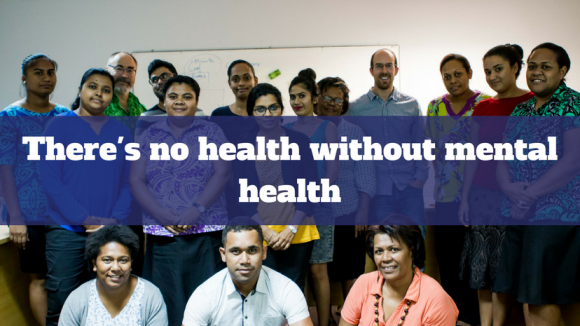
Launched in 2010, FAMH set out to educate the community, including activities and campaigns to reduce stigma. FAMH train survivors of mental health to work within the charity, enabling key input from first-hand experiences.

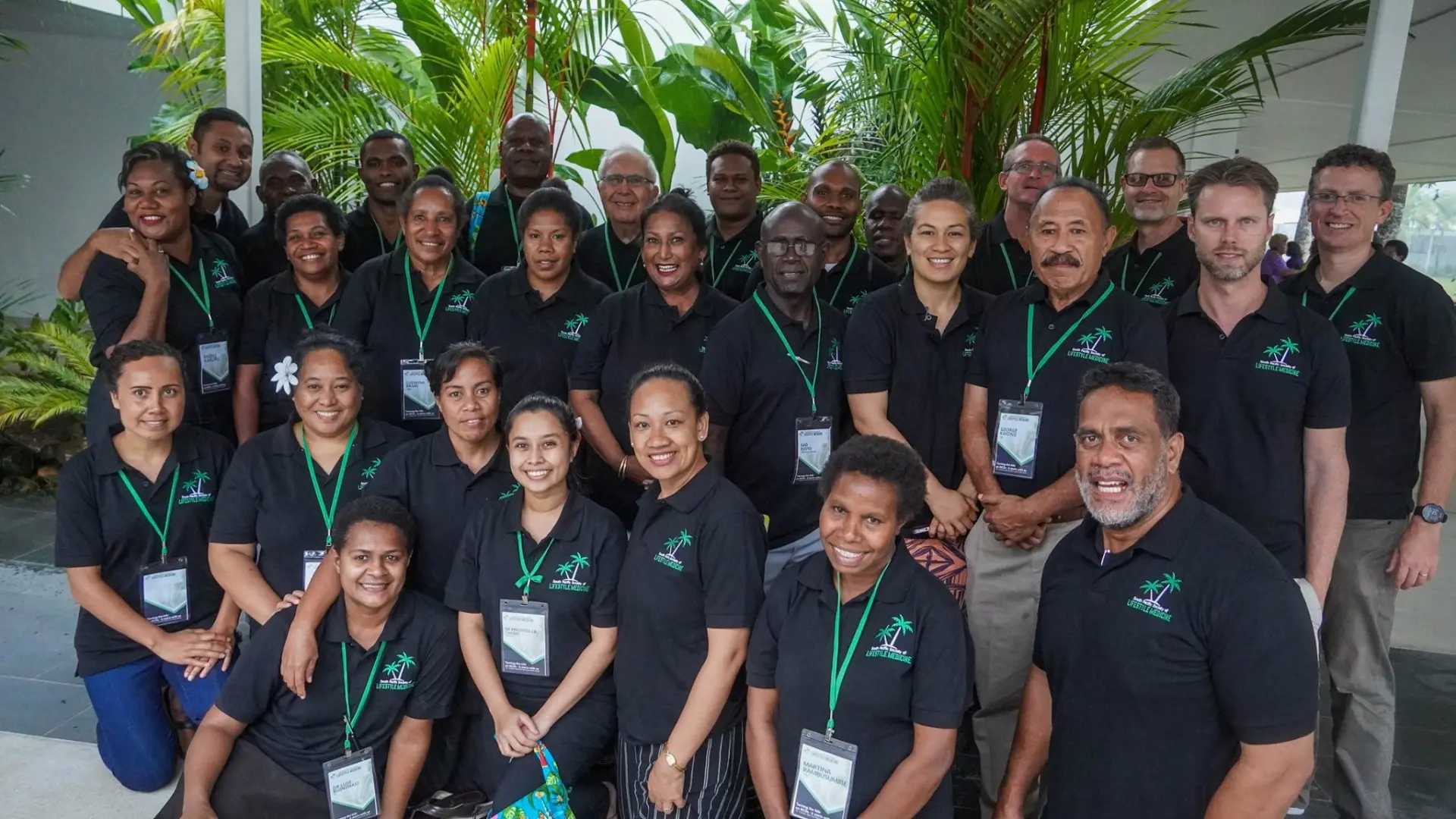
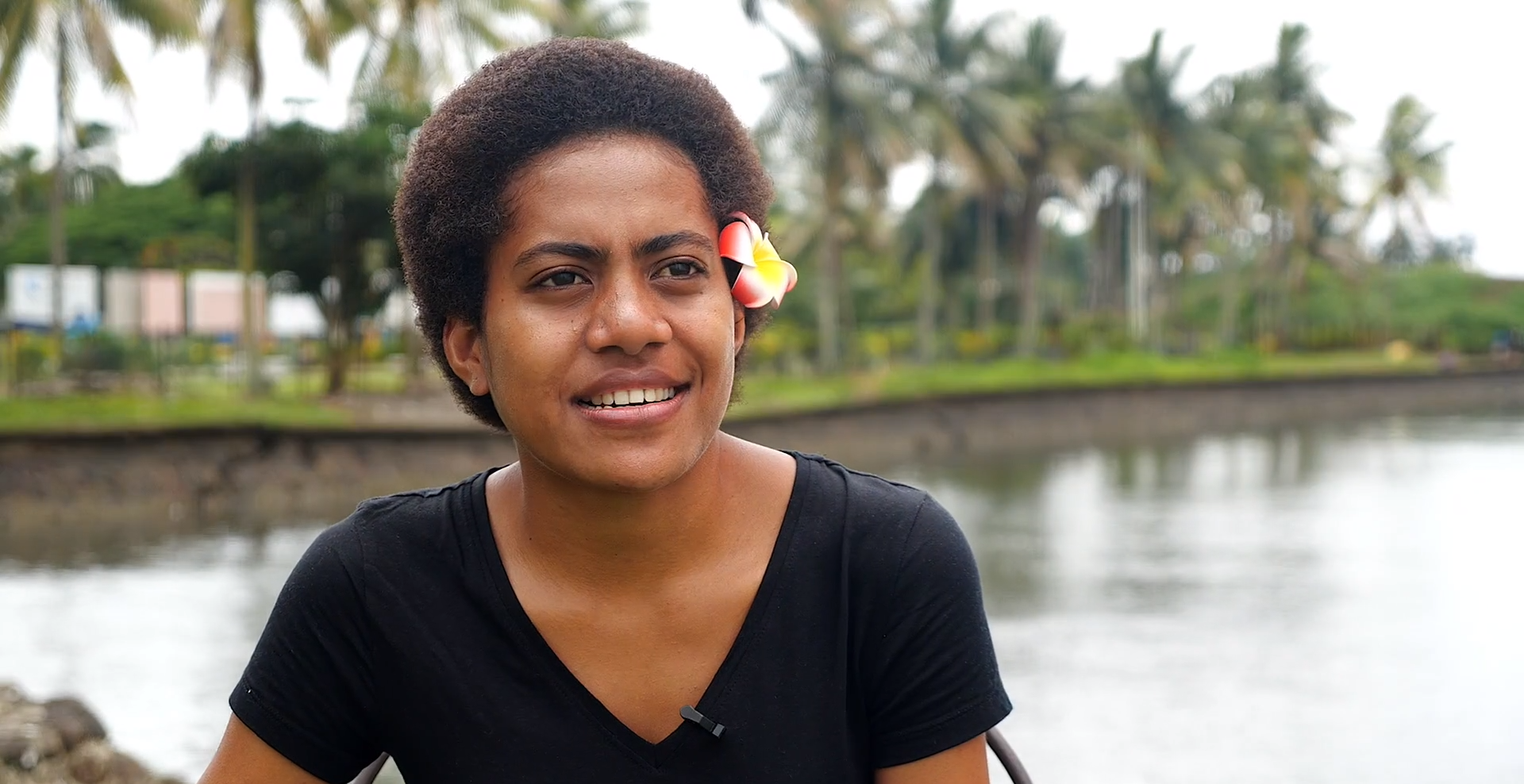
 City Wide Organisations: Examples of city-wide organisations include Lions Club, and The Rotary, among others. Almost every city has this type of NGO, and they engage in different activities every year. Whether you are a volunteer or are looking for work with NGOs, it helps to know how they operate so that you can find how best you will fit in.
City Wide Organisations: Examples of city-wide organisations include Lions Club, and The Rotary, among others. Almost every city has this type of NGO, and they engage in different activities every year. Whether you are a volunteer or are looking for work with NGOs, it helps to know how they operate so that you can find how best you will fit in.